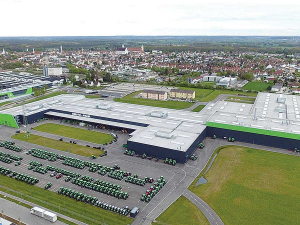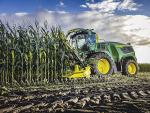CEMA, the umbrella group representing European agricultural machinery manufacturers, recently issued a report on the state of the European farm machinery market for the year ending 2021.
Due to anti-competition rules in Europe, such reports – including reports of tractor sales – are always one year in arrears.
Offering a wide range of data, the German agri machinery industry remained the largest exporter of agricultural machinery globally. It sent €13.2 billion (NZ$22.14 billion) of product overseas, easily beating China into second place at only €9 billion ($15.1b) and the United States in third place at €8 billion ($13.42b). It will be interesting to see if Germany managed to maintain these levels in 2022, given the Ukraine-Russia conflict, which dominated and continues to affect the region.
Looking at the broader picture, it is interesting to note that China swapped places with the US during the period. This is likely a reflection of Chinese strength in component manufacturing, a sector that is also included in the final tallies. It is also likely that the Chinese result will be significantly lower in 2022 following the extended “lockdowns” brought about by its tough stance in addressing Covid-19.
The US did lead the way in one area, spending €11.5 billion ($19.3b) on machinery imports from offshore. It was followed by France at €5.7 billion ($9.56b) and Germany, not too far behind at €5 billion ($8.39b).
CEMA also noted that Australia and New Zealand were increasingly important markets for European manufacturers, their opposite growing seasons allowing manufacturers to keep production lines running all year round. The organisation noted that Australia imported around €2.4 billion ($3.35b) of ag machinery in 2021.
CEMA also observed that while China is typically lauded as having untapped potential for companies looking to sell farm machinery, it doesn’t make the top 20 for importing foreign manufactured machinery. It comes in below Turkey, which takes only €0.7 billion ($1.17b) worth of imported machinery.
Overall, the largest European buyer of agricultural machinery in 2021 was France with a trade worth €7 billion ($11.75b). Germany followed at €6.9 billion ($11.58b). This is obviously reflected in the fact that the former has around 286,000 square kilometres devoted to crops.
A breakdown of European sales by product family shows tractors made up 22% of the total market, closely followed by parts at 18%, tillage and fertiliser spreaders at 12%, harvesting equipment 11% and grass machinery at 7%.
The report also shows robot sales in agriculture are growing: with the march of digitisation, 19,000 robots were sold in 2022, up 4,000 on the previous year and forecast to reach 22,000 units sold in 2023.











